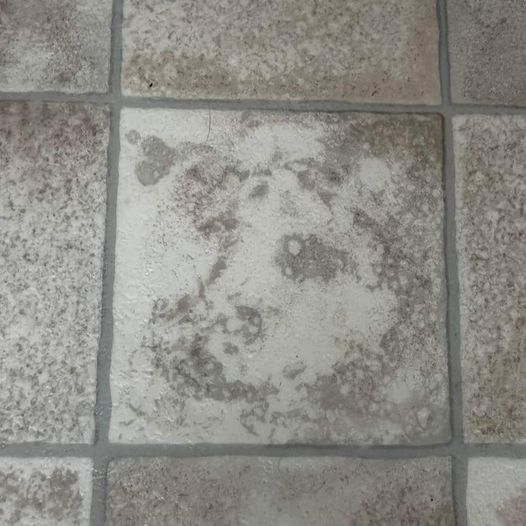Discovering Faces in Everyday Objects
In psychology and visual perception, there’s a fascinating quirk where we spot familiar patterns, especially faces, in random objects. Known as pareidolia, this phenomenon is perfectly illustrated in the image above. What seems like an ordinary tile floor reveals a faint face upon closer inspection.
What is Pareidolia? Pareidolia occurs when the brain interprets random stimuli—shapes, patterns, or sounds—as something meaningful, often a face. This explains why we see animals in clouds, faces in rocks, or, in this case, a visage in a worn floor tile.

Our brains are wired to recognize faces, an evolutionary trait crucial for identifying friends, foes, and others. This ability is so strong that even vague resemblances prompt our brains to see faces where none exist.
The Tile Face: A Closer Look In the image, the rough texture of the tile outlines a face with eyes, a nose, and a mouth. The “eyes” might be darker spots, the “nose” a central smudge, and the “mouth” a faint curve. This ghostly face seems like a hidden character, waiting to be noticed.
This instance of pareidolia transforms an ordinary tile into something mysterious and artistic. For some, this face might evoke wonder or even a touch of eeriness, as if the inanimate world is coming to life.
Why Do We See Faces? Seeing faces in objects is more common than you might think. This tendency comes from our evolutionary need for social connection and survival. Quickly identifying faces was crucial for early humans to recognize allies and detect threats. Over time, our brains became adept at picking up even the slightest facial cues, sometimes over-interpreting them.
Scientists suggest this ability has influenced how we read emotions, understand social interactions, and create art. It highlights the brain’s capacity to find meaning, even when that meaning is purely in our minds.
The Artistic Side of Pareidolia Pareidolia isn’t just a scientific curiosity; it has an artistic side. Artists have long been inspired by hidden images in the world around us. This art form encourages us to look beyond the obvious and find beauty in the unexpected.
The tile face could be seen as natural art—an accidental masterpiece shaped by time, wear, and our imagination. It’s a reminder that art can be found anywhere if we take a moment to see it.
Conclusion The next time you walk across a tiled floor, stare at a cloud-filled sky, or gaze at a textured wall, take a closer look. You might find a face staring back at you. Pareidolia reveals how our brains interpret the world and find wonder in the ordinary. These moments of recognition are small reminders of the magic hidden in everyday life.
